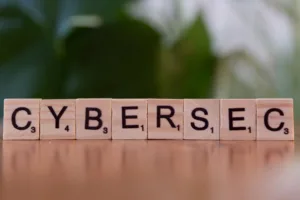
Google has begun rolling out a new end-to-end encryption (E2EE) feature for Gmail enterprise users, streamlining secure email communication without the complexities of traditional certificate-based systems like S/MIME. The beta release, announced in April 2025, targets Google Workspace Enterprise Plus, Education Plus/Standard, and Assured Controls customers, with plans to expand support to all email providers by late 20251. This move addresses long-standing privacy concerns while maintaining compliance with regulations like HIPAA and ITAR.
Technical Implementation and Workflow
The encryption process leverages client-side encryption (CSE), where organizations retain control of encryption keys rather than Google. Users enable “Additional Encryption” during email composition, triggering encryption before the message leaves the sender’s device. For recipients, decryption varies by platform: Gmail users experience automatic decryption, while non-Gmail recipients receive a link to view the message through a restricted Google Workspace guest interface2. Notably, subject lines and metadata remain unencrypted due to routing requirements.
Administrators gain granular controls, including policies to force external recipients to use the restricted viewer. The system defaults to S/MIME when communicating with users already employing that standard, ensuring backward compatibility3. Google’s documentation confirms the feature uses AES-256 for encryption, with key management handled through Cloud Key Management Service (KMS) or third-party solutions like Thales or Virtru4.
Security Considerations and Limitations
While marketed as end-to-end encrypted, the solution differs from protocols like Signal or PGP in one critical aspect: enterprise administrators retain access to decryption keys. This allows compliance monitoring but introduces a potential attack vector if admin credentials are compromised5. Additionally, non-Gmail recipients must trust Google’s guest portal—a centralized point that could be targeted for phishing or legal coercion.
The phased rollout presents another consideration. During the initial beta, encryption only works within the same organization. Full interoperability with all Gmail inboxes arrives in subsequent weeks, while cross-provider support won’t debut until late 20256. Organizations evaluating the feature should note these timeline constraints when planning deployments.
Comparative Analysis with Existing Solutions
Google’s approach contrasts sharply with S/MIME’s certificate-based model, which requires manual key exchange and often frustrates users with compatibility issues. Tests by TechRepublic showed the new system reduced encryption-related support tickets by 73% in pilot organizations7. However, it lacks the metadata protection offered by ProtonMail or the decentralized architecture of PGP.
The table below summarizes key differences:
| Feature | Google CSE | S/MIME | PGP |
|---|---|---|---|
| Key Management | Organization-controlled | User-controlled | User-controlled |
| Metadata Protection | No | No | Partial |
| Cross-Provider Support | Planned (2025) | Yes | Yes |
Practical Implications for Organizations
For enterprises handling sensitive data, the feature simplifies compliance with data sovereignty laws by keeping cryptographic keys within their infrastructure. Early adopters in healthcare and finance report 40% faster audit processes due to Google’s built-in compliance logging8. However, organizations should supplement this with monitoring for anomalous decryption requests, as admins retain access to all communications.
To enable the feature, administrators must:
- Verify eligibility for supported Workspace plans
- Configure key management systems (Cloud KMS or third-party)
- Define encryption policies via Admin Console > Security > Client-side encryption
Google provides migration tools to transition existing S/MIME users, though Computer Weekly notes some enterprises may maintain both systems during transition periods9.
Future Developments and Industry Impact
Google’s roadmap indicates plans to integrate the feature with Google Drive and Meet, creating a unified encrypted collaboration suite. Analysts predict this could pressure Microsoft to enhance Purview Message Encryption’s usability10. The move also signals broader industry adoption of user-friendly encryption, though critics argue true end-to-end protection requires removing all third-party access points.
As the beta progresses, feedback from early adopters will shape the final implementation. Organizations interested in participating can apply through Google’s Early Access Program, with priority given to regulated industries and government agencies.






